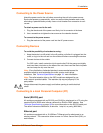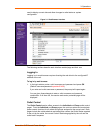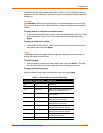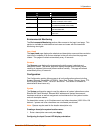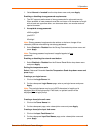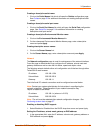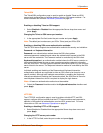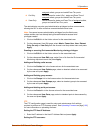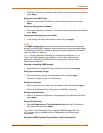
3: Operations
Creating a descriptive outlet name:
1. Click on the Outlet Names link which will open the Outlets configuration page.
See
Outlets on page 22 for additional information on creating descriptive outlet
names.
Creating a descriptive serial port name:
1. Click on the Serial Port Names link which will open the Serial Port configuration
page. See
Serial Port on page 21 for additional information on creating
descriptive serial port names.
Creating a descriptive Environmental Monitor name:
1. Click on the Environmental Monitor Names link.
2. On the subsequent Environmental Monitor Names page, enter a descriptive
name and press Apply.
Creating descriptive sensor names:
1. Click on the Sensor Names link.
2. On the Sensor Names page, enter a descriptive name and press Apply.
Network
The Network configuration page is used for maintenance of the network interface.
From this page an administrator may configure the IP address, subnet mask and
gateway address as well as view the link status, speed and duplex value.
The following network defaults allow unit configuration out-of-the-box through either
Telnet/SSH or web browser:
IP address: 192.168.1.254
Subnet Mask: 255.255.255.0
Gateway: 192.168.1.1
The initial local PC network connection must be configured as noted below:
Note: Contact your system administrator for instructions in reconfiguring the
network connection. Reconfiguration of your network connection may
require a restart to take effect.
IP address: 192.168.1.x (where x is 2-253)
Subnet Mask: 255.255.255.0
Note: The unit must be restarted after network configuration changes. See
Performing a warm boot on page 57.
Enabling or disabling DHCP support:
1. Select Enabled or Disabled from the DHCP drop-down menu and press Apply.
Setting the IP address, subnet mask, gateway or DNS address:
1. In the appropriate field, enter the IP address, subnet mask, gateway address or
DNS address and press Apply.
SecureLinx SLP Remote Power Manager 19




